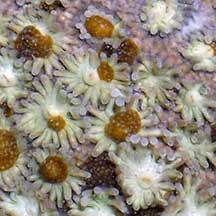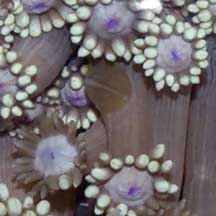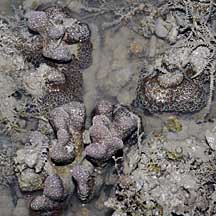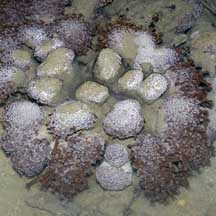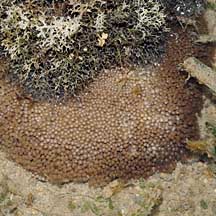 |
|
| hard corals text index | photo index |
| Phylum Cnidaria > Class Anthozoa > Subclass Zoantharia/Hexacorallia > Order Scleractinia > Family Poritidae |
| Goniopora
corals Goniopora sp.* Family Poritidae updated Sep 2025 Where seen? These hard corals are among those commonly seen on many of our shores. They are more commonly seen on our Southern shores. Bernardpora stutchburyi also in the Family Poritidae, can look like Anemone corals. Features: Colonies (10-15cm) boulder-shaped or form short fat columns with rounded tops. The corallites are small to tiny (0.2-0.5cm) circular or polygonal, packed close to one another. The skeleton is porous. Some have polyps with long bodies and long tentacles. In these, with the polyps extended, the skeleton is hidden and the entire colony is often mistaken for a sea anemone. Others have polyps with short bodies and tentacles, yet others have tiny polyps. Polyps have 24 tentacles and can retract completely into the skeleton. It's hard to distinguish the different species without close examination. On this website, they are grouped into anemone corals (with long polyps) and small goniopora corals (with tiny polyps) for convenience of display. Sometimes, tiny brown acoel flatworms are seen on the oral disk or body columns of anemone coral polyps. Anemone coral babies: Goniopora corals may reproduce by producing balls of polyps. Human uses: Goniopora corals do poorly in captivity because they need lots of plankton, especially plant plankton. Those kept in aquariums usually die a slow death of starvation. Status: While a few species are listed as Near Threatened, for most there is inadequate information as at 2024 to make an informed assesment of their conservation status in Singapore. |
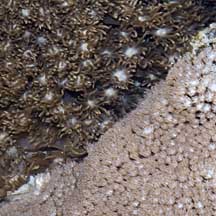 Larger polyps of Anemone coral compared with smaller Small goniopora coral. |
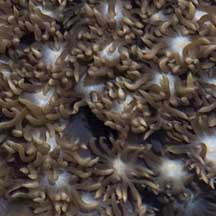 |
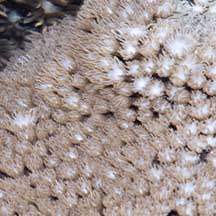 |
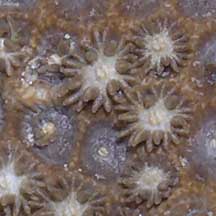 Circular corallites. |
| Some Goniopora corals on Singapore shores |
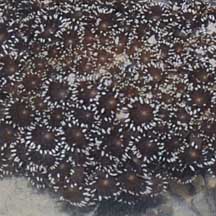 |
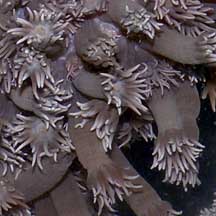 |
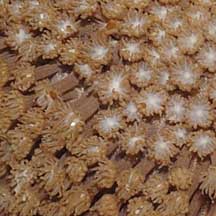 |
*Species are difficult to positively identify without close examination.
On this website, they are grouped by external features for convenience of display.
| Goniopora
species recorded for Singapore from Checklist of Cnidaria (non-Sclerectinia) Species with their Category of Threat Status for Singapore by Yap Wei Liang Nicholas, Oh Ren Min, Iffah Iesa in G.W.H. Davidson, J.W.M. Gan, D. Huang, W.S. Hwang, S.K.Y. Lum, D.C.J. Yeo, May 2024. The Singapore Red Data Book: Threatened plants and animals of Singapore. 3rd edition. National Parks Board. 663 pp. in red are those listed as threatened in the above.
|
|
Links
References
|
